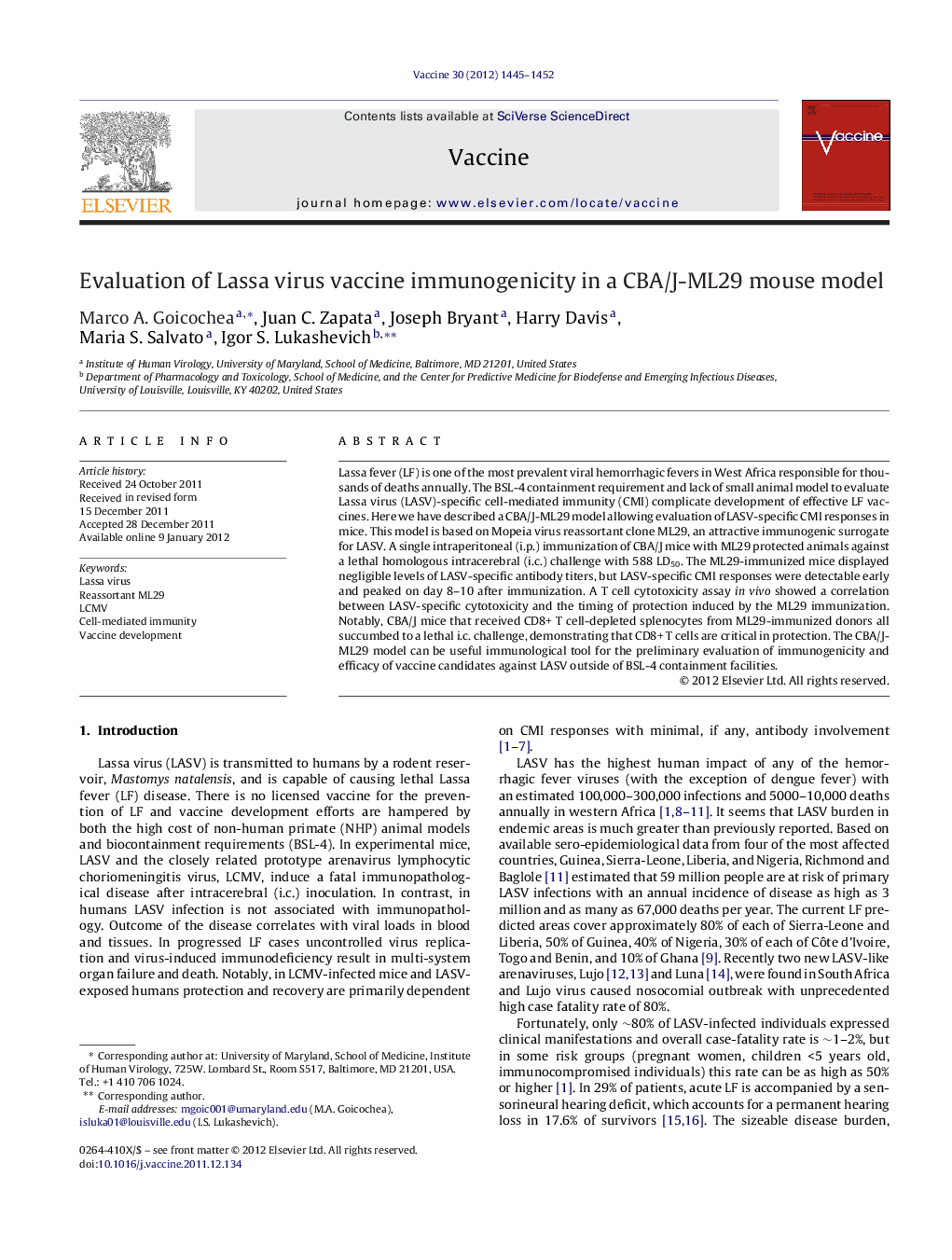| Article ID | Journal | Published Year | Pages | File Type |
|---|---|---|---|---|
| 2403131 | Vaccine | 2012 | 8 Pages |
Lassa fever (LF) is one of the most prevalent viral hemorrhagic fevers in West Africa responsible for thousands of deaths annually. The BSL-4 containment requirement and lack of small animal model to evaluate Lassa virus (LASV)-specific cell-mediated immunity (CMI) complicate development of effective LF vaccines. Here we have described a CBA/J-ML29 model allowing evaluation of LASV-specific CMI responses in mice. This model is based on Mopeia virus reassortant clone ML29, an attractive immunogenic surrogate for LASV. A single intraperitoneal (i.p.) immunization of CBA/J mice with ML29 protected animals against a lethal homologous intracerebral (i.c.) challenge with 588 LD50. The ML29-immunized mice displayed negligible levels of LASV-specific antibody titers, but LASV-specific CMI responses were detectable early and peaked on day 8–10 after immunization. A T cell cytotoxicity assay in vivo showed a correlation between LASV-specific cytotoxicity and the timing of protection induced by the ML29 immunization. Notably, CBA/J mice that received CD8+ T cell-depleted splenocytes from ML29-immunized donors all succumbed to a lethal i.c. challenge, demonstrating that CD8+ T cells are critical in protection. The CBA/J-ML29 model can be useful immunological tool for the preliminary evaluation of immunogenicity and efficacy of vaccine candidates against LASV outside of BSL-4 containment facilities.
► CBA/J-ML29 model allows for the evaluation of LASV-specific T cell responses in mice. ► Reassortant virus ML29 is an attractive immunogenic surrogate for LASV. ► Cell mediated immune responses in mice correlate with protection. ► CD8 cytotoxic T cells critical for survival against homologous challenge. ► Safer alternative model for evaluation of LASV vaccines.
